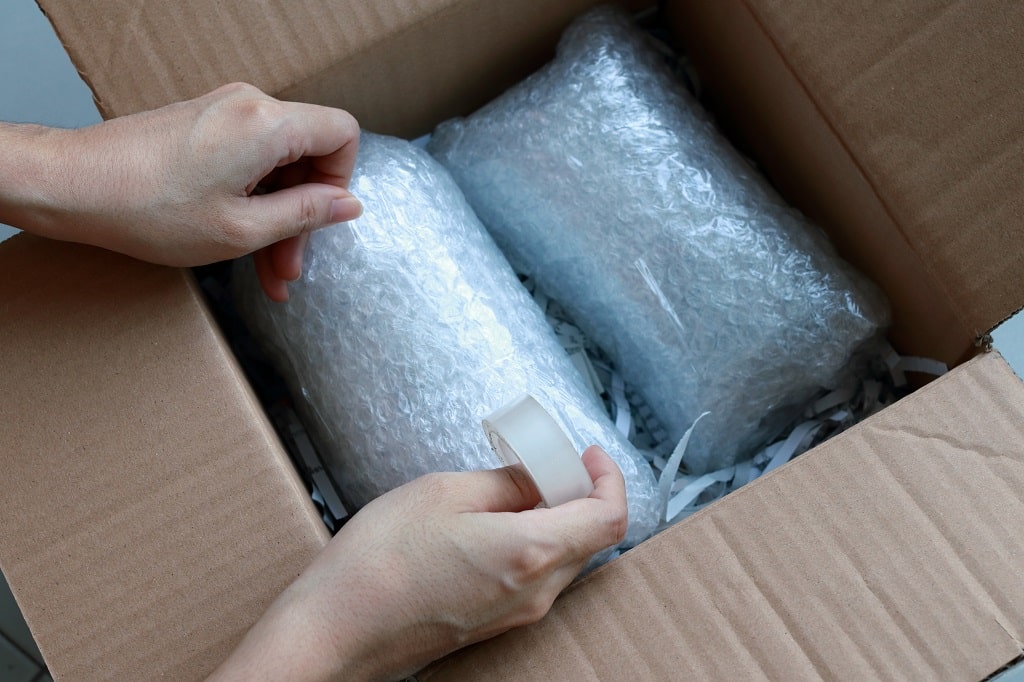Packing can be particularly stress-inducing and overwhelming, especially when getting ready to move. Having to pack up and organize everything you own can be intimidating, not to mention worrying about the truth that something might get broken along the way. However, with the right strategies and techniques, you'll be able to see all your possessions packed up and ready for the journey to your new home.
Make a Plan
Take the time to create a plan and set your timetable before packing. Because packing is such a time-consuming task, ensure you give yourself plenty of time so the process doesn't seem impossible. First, declutter by eliminating any items you don't need or want. You will save time and money when it comes to moving, as the items are lighter and there is also one less box. After you have decluttered, begin to categorize your things into different groups. Some might be fragile items; others perhaps electronics or fabrics of various kinds for clothing. This makes the act of packing more easily handled in principle anyway.
Fragile Items
Packing dishes, glasses, or vases requires a proper material and technique. First, crumple up some paper or newspaper to form a cushion on the bottom of the box. Afterward, secure each fragile item in bubble wrap or packing paper with tape. Put the heavier items on the bottom and pack spaces with more crumpled newspaper to keep them from moving around in transit. Be sure to write "fragile" on the box and indicate which side should be kept upright. It is also an excellent idea to double-box fragile items for added protection.
For larger, more fragile items like mirrors or paintings, use special mirror boxes and sturdy cardboard boxes. Put the item into the box and pack around it with bubble wrap or foam padding to keep things from moving. Mark the box "fragile" and specify which side must remain up. If the object is too big to put in a box, cover it with a moving blanket or bubble wrap and tape.

Electronics
Electronics can be hard to pack and need care. First, wrap off any cords or odds and ends separately. If possible, return the electronic device to its original packaging; otherwise, fill in any empty spaces with bubble wrap or foam padding. If the original packaging is not to hand, wrap it on bubble wrap or blankets and tie it with tape. Write on the box: electronic, and include any instructions or manuals to simplify installation at the new location.
Clothing
For packing clothes, the type and number depend on how you choose to fill them. It is better to use specially-made wardrobe boxes to hang your clothes while moving for expensive or delicate garments. As for the rest of your wardrobe, you can try suitcases or duffle bags and even plastic bins. These are all durable and convenient to stack and transport. For bulky things like coats or comforters, vacuum-sealed bags save plenty of room and make packing easier.
Heavier Items
For heavy items such as books, use small, sturdy boxes; do not overpack them. Better to have a greater number of packages, each with lighter loads. Having too few or going over the load means they can be difficult to move and expose them all more easily to damage. Open up the boxes, label them as heavy, and use strong packing tape along the bottoms and tops of each box.
Furniture
Furniture is another important consideration when packing for a move. First, dismantle any furniture, such as tables and bed frames. This should make packing and transporting easier. For items that cannot be dismantled, such as dressers or bookshelves, pull out drawers and shelves first; pack them separately with their contents. Wrap the furniture in moving blankets or pads to protect it during transport. You can also secure the blankets with stretch wrap to keep them from slipping.

Label Everything
Every box and piece of furniture ought to be labeled. Unpacking becomes so much easier that way. The contents of each box and the room it belongs to should be marked on the outside. Another thing you can do is color code your packages by room so that it's even easier to know where each box should go. This will help you save time and energy when unloading and unpacking at your new home. Furthermore, immediately prepare a box with the essentials: toiletries, medications, and clothes. This will spare you the need to rummage in packs to find these necessities upon arrival at your new home.
In conclusion, packing for a move may seem intimidating and overwhelming. Still, if you properly use available strategies and techniques, it is possible to transport your belongings easily in whatever way is necessary. It will make it easier to unpack when you list what's inside on labels pasted on the sides of boxes. When wrapping things up, use suitable materials and techniques for packing fragile items together securely in one package.
By: Katherine Robinson, a writer for iMOVE
